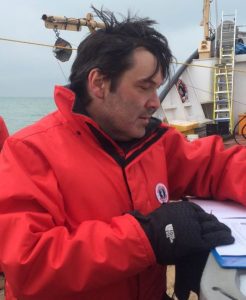As Canadians take their first tentative steps out of lockdown, a group of researchers is scanning the bowels of our cities and towns for signs of potential flare-ups.
Less than four per cent of our population has been tested for the coronavirus and epidemiologists say we don’t truly know how many people are infected.
But examining untreated feces in wastewater treatment plants may give us an early warning of infection spikes. Studies show the virus can be detected in infected people’s feces – sometimes even before they begin exhibiting symptoms. While researchers can’t determine how many people might be infected in a given sewage catchment area, they can detect a rise or fall in the viral load in possibly in advance of hospital admissions increasing.
Public health officials could use this information to decide whether to reintroduce physical distancing or to boost hospital capacity in certain communities.
“The so-called second and third waves we keep hearing about – we could see it (in sewage) maybe a week to 10 days before you start seeing manifestations of reinfection in the community,” says Mike McKay, an environmental microbiologist at the University of Windsor.
McKay is part of a loose coalition of scientists across the country teaming up to create common protocols for sampling and analysis so they can compare results across communities. While wastewater-based epidemiology has been used for several years to identify and quantify pathogens, such as hepatitis A and norovirus, coronavirus is still new enough that scientists don’t yet have systems in place for working with it.
That’s what the newly created Canadian Coalition on Wastewater-Related COVID-19 Research hopes to do. It is a national collaboration of municipalities, utilities, researchers, public health organizations and governments working to support public health officials’ ability to make informed decisions in the face of COVID-19.
McKay, for example, is working with staff at two Ontario wastewater treatment plants to collect weekly samples of untreated sewage. The plants, in Lakeshore on Lake St. Clair and in Amherstburg, near the mouth of the Detroit River, process waste water for roughly 50,000 people. McKay expects to begin collecting samples before the end of May and hopes to have results showing trends in viral loads by mid summer.
“We may have been caught off guard by the pandemic in the first place,” says the coalition’s chair, Steve E. Hrudey. “I think we’ll be negligent if we don’t have a functional surveillance network using these techniques before a second wave comes, which everybody is predicting for the fall.”
Hrudey is an expert in environmental health risk management and a professor emeritus at the University of Alberta. He and his team are paying close attention to the work of researchers around the world, including in Europe, Australia and the United States, who are also looking for the coronavirus’s genetic signature in sewage.
Researchers think the virus is no longer infectious by the time it reaches sewage treatment plants but its genetic material remains intact enough to read its sequence and identify it.
That being said, scientists with the Canadian coalition are treating it as if it is infectious. Nowhere is that a more sensitive topic than in Montreal – Canada’s hardest hit city.
“It’s personal for me,” says Sarah Dorner, an environmental engineer at Polytechnique Montréal and a coalition member. “I know people who were hit early on. It’s really nasty – people get very sick.”
Dorner and her team have been taking daily samples from Montreal’s sewage treatment plant since February and storing them in her lab at -80C to keep the viral RNA intact. She is hoping to receive biosafety permission this week so she can begin analyzing them.
An important part of that analysis will be accounting for varying levels of snow melt and spring rains. Like many Canadian cities, Montreal has combined sewers that use the same pipes for stormwater and sanitary flows. This means heavy melt or rainfall can dilute pathogens, making them harder to find. Even in systems that don’t combine sewers, spring rains can boost the height of the groundwater and it can seep into pipes.
“We want to see the signal through the noise of changing ratios of water,” says Dorner, who has developed systems for doing exactly that.
Another hurdle for sewage researchers will be getting their hands on the chemicals that detect the presence of viral RNA. These are the same chemicals used in some of the diagnostic tests for COVID-19.
Testing sewage samples is important, says Dorner. But if resources are scarce, the priority should be ramping up individual diagnoses so public health officials can trace infected people’s contacts and isolate them.
“We’re a second-tier priority,” she says. “The real utility of what we’re doing is in the second wave. We can wait. But the idea is to get the tools in place now.”



The comments section is closed.
“Researchers track high levels of COVID-19 in Florida wastewater,” Beau Zimmer, 05-24-2020, WTSP Channel 10 News, https://www.wtsp.com/article/news/health/coronavirus/researchers-find-covid-coronavirus-in-florida-wastewater/67-877e2d53-bac4-417e-ad7d-d301d8c7f9cc